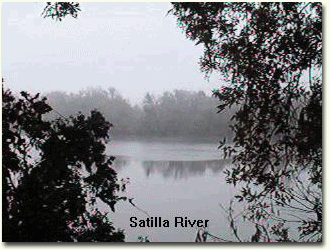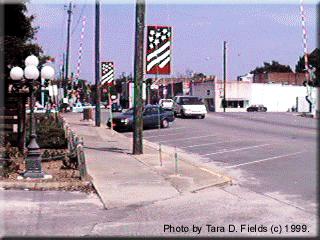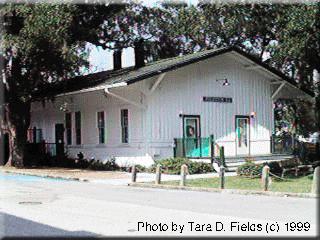 |
| History of
Charlton County
Bordered to the south by the St. Marys River, Charlton County is one of Georgia's largest counties. It was formed by the General Assembly of Georgia on 18 February 1854 from part of Camden and Ware counties. Charlton boundaries were "Commencing at Coleraine, on the St. Marys river, thence running a direct line up said river to the line of Wayne County, thence running on said line to the line of the State of Florida, on the St. Marys river, thence running on said line to the place of commencement at Coleraine aforesaid." Charlton is named for the Georgia Judge, Robert Milledge Charlton (1/19/1807-1/18/1854), who was one of Georgia's foremost jurists. Judge Robert M. Charlton of Savannah was the son of T.U.P. Charlton who himself served 6 terms as Mayor of Savannah and Judge of the Eastern Circuit of the Superior Court. President Andrew Jackson appointed Judge Robert M. Charlton District Attorney at 23 years of age. He was later Judge of the Eastern Circuit as well as the Mayor of Savannah for 2 terms. In 1844, Judge Robert M. Charlton succeeded John McPherson Berrien in the US Senate and was made Regent of the Smithsonian Institute in Washington, D.C. He was also one of the original incorporators of the Georgia Historical Society. The son of Judge Robert M. Charlton, Judge Walter G. Charlton, was an eminent jurist himself as well as a scholar. He was also a Judge of the Eastern Circuit of Georgia. Charlton was (is?) in the 1st Congressional District and in the Southern Judicial Circuit. Charlton's First commissioners were Thomas Hilliard, A.J. Bessant, and Thomas D. Hawkins. First elections for county second Monday in April 1854 at Trader's Hill. Offices include: Sheriff, Tax Collector, Tax Receiver, Clerk of the Superior Court, Clerk of the Inferior Court, Surveyor, and Coroner. The Session of the General Assembly of 1855-6 added territory from Ware County and the line between Camden and Charlton changed: "Be it enacted that the line dividing the counties of Camden and Charlton shall commence at Oak Landing, the lower end of the
upper Coleraine Bluff, on the St. Marys River, and run thence a straight line to Groman's Bluff, on the Satilla River." Charlton County remained sparsely populated until just a few years before becoming its own county. Immigrants came from Camden County as well as other parts of Georgia such as Wayne, Pierce, Appling, Tattnall, and Bulloch counties. They also came from other states such as Florida and the Carolinas. While Trader's Hill was the first county seat, there was more trade and commerce in the Charlton town of Center (Centre) Village than in almost any other town in SE Georgia. Center Village supplied soldiers for the Confederacy including the company known as the "Okefenokee Rifles" (Co. "F," 26th Regt. of GA Infantry.) The "Rifles" were mustered into service at Old Trader's Hill under Captain William C. Dasher. Charlton sent many men off to the Civil War and had to survive reconstruction shortly after becoming a county (only 11 years between becoming a county and the end of the war!). There had been very few slaves in Charlton mostly because there were not many plantations. During the war, Union sympathizers are said to have stole horses, mules, and cattle to sell to Federal Troops camped at nearby Fernandina, Florida. The people of Charlton, whose families mixed with those of Camden, were a different lot from their Camden cousins. Charlton folk tend to be then and now, a more relaxed bunch. They are very friendly and seem to be more down to earth. Many families lived on islands in the Okefenokee Swamp until the mid-1900s. Swamp folk tended to be honest, hard working, God-fearing people. Many belonged to one of the Primitive Baptist Churches that dotted the county. Camden folk tended to be more Methodists than anything else.
Center Villiage, Centre Village, Centerville was located about 2 miles NE of Folkston. Centerville was settled around 1800 as a Trading Center near Camp Pinckney landing on the St. Marys River. It was also a stop on the old stage coach line on King's Road. Traders came from Ware, Pierce, Clinch, Appling, and Coffee Counties in Georgia as well as from Florida. Although folks around here often used sports to settle disputes, the occasional murder was known to happen. In addition, some people died because of participating in these "sports." Some merchants and traders were included John Villalonga, Domingo Coster, Thomas Hillard, Stephen McCall, and an Israelite named Guggenheimer. Some settlers of Center Village were the Vernons,
Roddenberrys, Johnsons,
Cains, Wain(w)rights, Lowthers, Bakers, Holzendorfs,
Vickerys, as well as
Gen. T.H. Hilliard, John Mizell, Peter Mumford, and
Stephen McCall. After
the Civil War the area declined. The railroad between Jacksonville, FL and
Savannah, GA finally ruined it around 1880.
The English established Trader's Hill (Fort Alert) around 1755. The fort was maintained to protect the settlers from the Indians. In 1854, it became the county seat as well as a center of commerce. Bar fights and killings were not uncommon. The same railroad that killed Centerville also killed Trader's Hill. In 1901, the county seat was moved to Folkston. The information on this page is from The History of Charlton County by Alex S. McQueen, 1930's. Permission to use work granted by the Charlton County Historical Society. The Charlton County Chamber of Commerce (photo at right) is located in a restored train depot. Since much of Charlton County was part of Camden County until Charlton formed in 1854, be sure to check out the Camden County History Pages. For further research, please be sure to check out the Bryan - Lang Library. I have a page up with their pamphlet and contact information, but this is not their official web site.
|
 Special
Note: John and Viva Jean Johnson Outterson have graciously given me copies
of three of their books as well as a history pamphlet. The books include
historical information in addition to genealogy from Viva Jean's family -
the Johnsons of Charlton County and northeast Florida. Also, be sure to visit
Jack Mays' site, The Pine
Barrens. He's written many articles on Charlton County. Otherwise please
continue reading this page for a summary of Charlton County's history.
Special
Note: John and Viva Jean Johnson Outterson have graciously given me copies
of three of their books as well as a history pamphlet. The books include
historical information in addition to genealogy from Viva Jean's family -
the Johnsons of Charlton County and northeast Florida. Also, be sure to visit
Jack Mays' site, The Pine
Barrens. He's written many articles on Charlton County. Otherwise please
continue reading this page for a summary of Charlton County's history.
 Some
of the dead towns of the area include:
Coleraine began as an Indian Trading Post and spread over the line into
Camden where it's now located. Today the "e" has been dropped from the name.
Some
of the dead towns of the area include:
Coleraine began as an Indian Trading Post and spread over the line into
Camden where it's now located. Today the "e" has been dropped from the name.